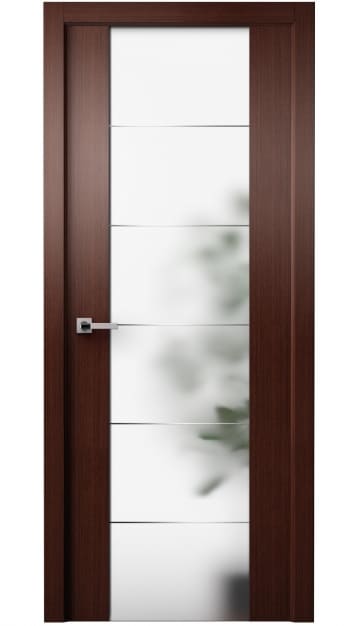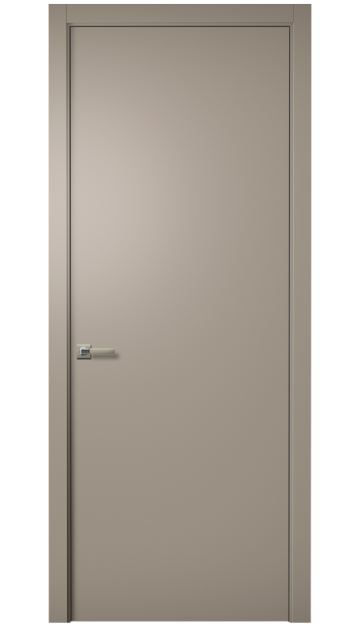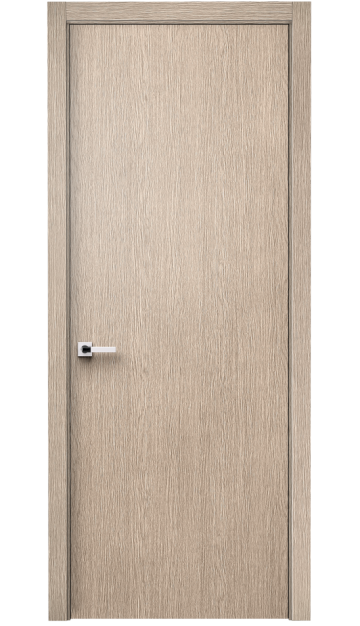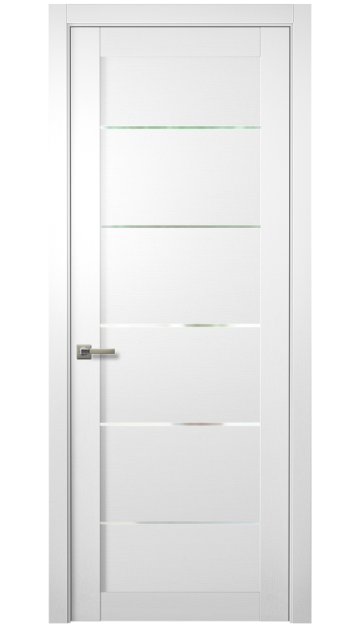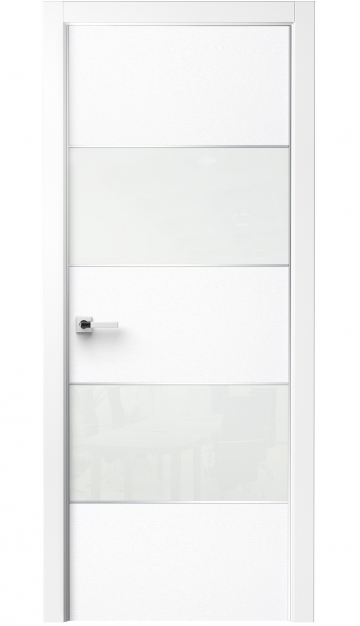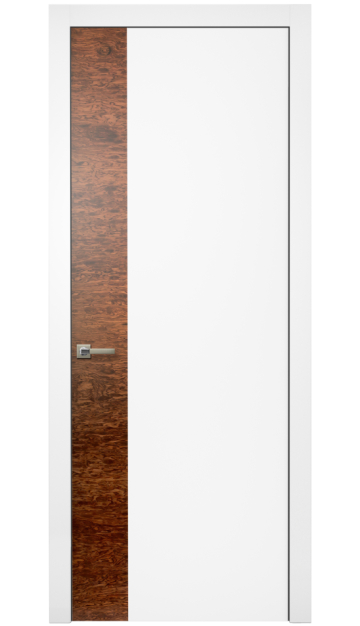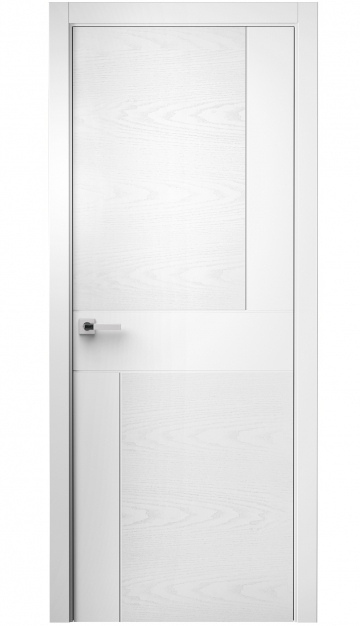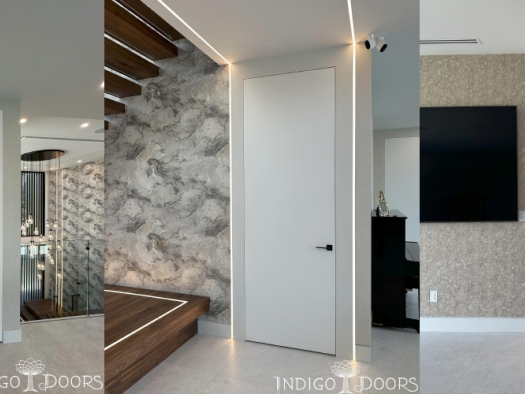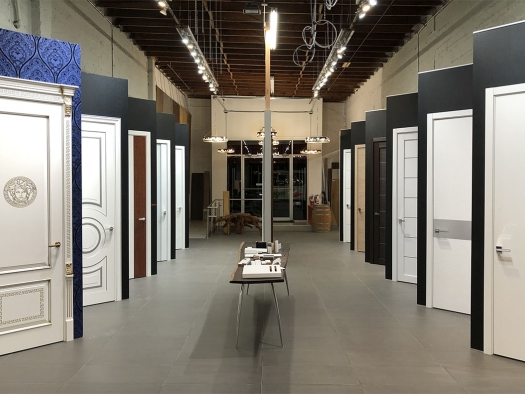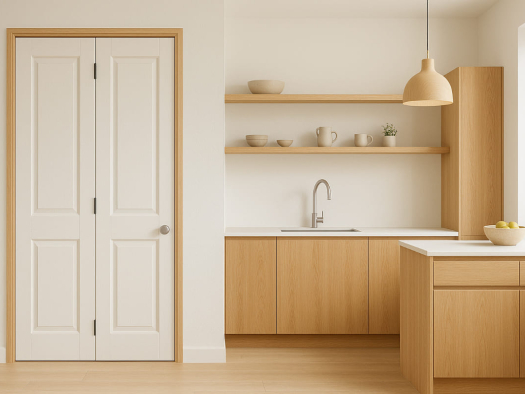- Understanding the Difference Between Pre-hung and Slab Doors
- What is a Pre-hung Door?
- What is a Slab Door?
- Pros and Cons of Pre-hung Doors
- Advantages and Disadvantages of Slab Doors
- When to Choose a Pre-hung Door
- When to Choose a Slab Door
- Cost Comparison: Pre-hung Doors vs Slab Doors
- Installation Process: Pre-hung Doors vs Slab Doors
- Which Door Type is Easier to Install?
- Customization Options for Pre-hung and Slab Doors
- How to Measure for Pre-hung and Slab Doors
- Maintenance Tips for Pre-hung and Slab Doors
- Common Mistakes to Avoid When Choosing Between Pre-hung and Slab Doors
- Why Choose Indigo Doors for Your Pre-hung and Slab Door Needs
When it comes to choosing the right interior doors for your home, one of the first decisions you’ll need to make is whether to go with pre-hung doors or slab doors. Both options have their own unique benefits and potential drawbacks, and understanding these differences is crucial to making the best choice for your needs.
Pre-hung doors are a popular option for new construction or major renovations because they come as a complete unit, including the door frame, hinges, and often the lockset. This can make installation easier and ensure that everything fits perfectly right from the start. On the other hand, slab doors are simply the door itself, offering more flexibility in terms of customization but requiring a bit more work during installation.
In this article, we’ll explore the key differences between pre-hung and slab doors, including their pros and cons, installation processes, and cost considerations. Whether you’re updating a single room or outfitting an entire home, understanding these factors will help you choose the right door type for your project.
Indigo Doors offers a wide selection of pre-hung doors, crafted with the highest quality materials and available in a variety of styles. With nationwide delivery, you can count on Indigo Doors to provide the perfect doors for your home, no matter where you are located. Read on to learn more about pre-hung and slab doors, and discover which option is best suited to your needs.
Understanding the Difference Between Pre-hung and Slab Doors
When it comes to choosing interior doors for your home, you’ll often come across two main options: pre-hung doors and slab doors. While both serve the same basic function, they differ significantly in terms of installation, cost, and flexibility. Understanding these differences is key to making the right choice for your home.
Pre-hung doors come as a complete unit, with the door already attached to the frame, along with the hinges and, in some cases, even the lockset. This makes them a convenient option, particularly for new construction or extensive renovations where the door frame needs to be replaced.
Slab doors, on the other hand, are simply the door itself—no frame, hinges, or hardware included. They’re often used in situations where the existing door frame is in good condition, and you only need to replace the door itself. Slab doors offer more flexibility in terms of customization, but they also require more work during installation.
By understanding the fundamental differences between these two types of doors, you can better assess which option is right for your specific needs and preferences.
What is a Pre-hung Door?
A pre-hung door is a door that comes pre-installed in its own frame, complete with hinges and often pre-drilled holes for the lockset. This type of door is designed to be a ready-to-install unit, making the installation process more straightforward and less time-consuming, especially for those who may not have a lot of experience with door installation.
One of the main advantages of a pre-hung door is that it ensures the door is perfectly aligned with the frame, reducing the chances of issues such as gaps, drafts, or misalignment. This is particularly important in new construction projects or in situations where the existing door frame is damaged or outdated and needs to be replaced.
Pre-hung doors are typically more expensive than slab doors due to the additional materials and labor involved in assembling the frame and attaching the door. However, the ease of installation and the assurance of a properly aligned door can often justify the higher cost, especially in complex projects.
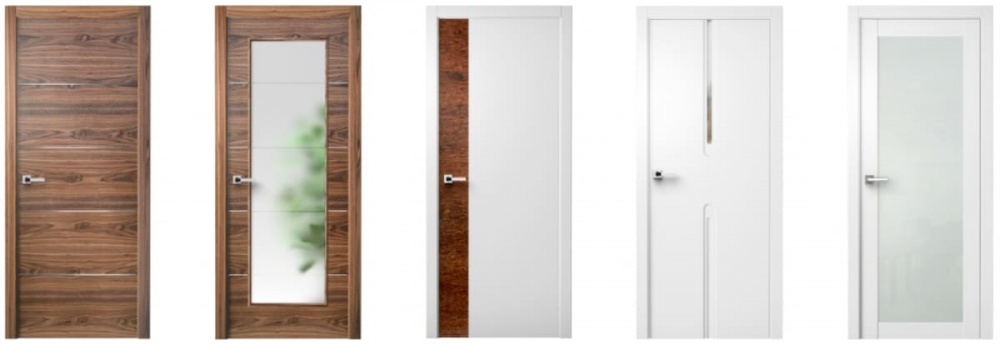
What is a Slab Door?
A slab door is simply the door itself, without a frame, hinges, or pre-drilled holes for hardware. This option is often chosen when the existing door frame is still in good condition, and you want to replace the door while keeping the frame intact. Slab doors offer a high level of flexibility, as they can be cut and customized to fit almost any frame.
One of the main benefits of a slab door is its cost-effectiveness. Since it doesn’t include a frame or hardware, it’s generally less expensive than a pre-hung door. This makes it an attractive option for budget-conscious homeowners who are comfortable with a bit more hands-on installation work.
However, installing a slab door can be more challenging than installing a pre-hung door. It requires precise measurements, careful alignment, and the installation of hinges and hardware. For those with some DIY experience, a slab door offers an opportunity to customize the door to their exact specifications, but it may not be the best choice for beginners.
Pros and Cons of Pre-hung Doors
When considering pre-hung doors for your home, it's important to weigh the benefits and drawbacks to determine if they're the right choice for your project. Here's a breakdown of the pros and cons:
Pros:
- Ease of Installation: Pre-hung doors come with the door already attached to the frame and hinges, making the installation process quicker and more straightforward.
- Perfect Alignment: Since the door and frame are pre-aligned, there's less risk of issues like drafts, squeaks, or difficulty closing the door, which makes them ideal for new construction or renovations.
- Time-Saving: Because everything is pre-assembled, you save time during the installation process, which can be particularly beneficial in large projects or tight timelines.
Cons:
- Higher Cost: Pre-hung doors are generally more expensive than slab doors, both in terms of material costs and the potential need for professional installation.
- Heavier and Cumbersome: Due to the attached frame, pre-hung doors are bulkier, making them more challenging to transport and install, especially in tight or awkward spaces.
- Limited Customization: Since they come pre-assembled, there is less flexibility in adjusting or customizing the frame and door to fit unique openings or design preferences.
For homeowners seeking convenience and ease in their renovation projects, pre-hung doors are an attractive option. However, the higher costs and potential challenges in installation should be carefully considered.
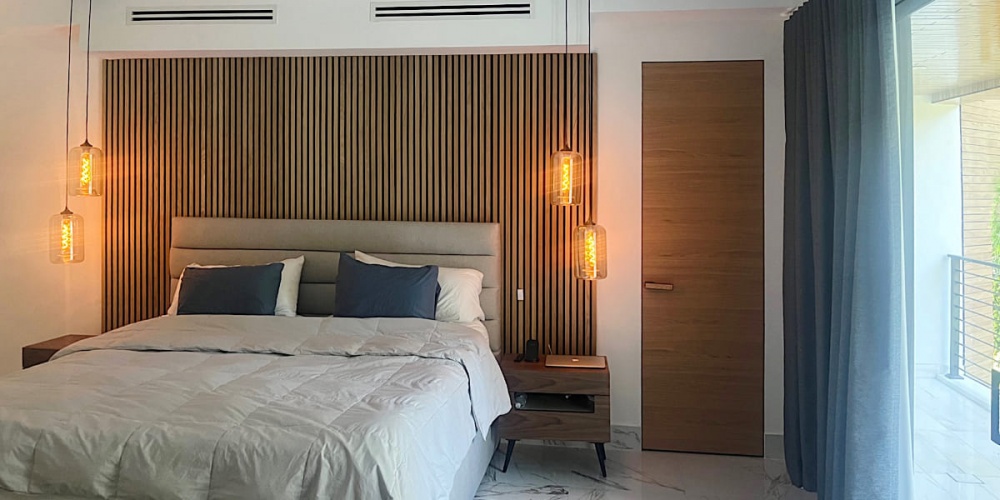
Advantages and Disadvantages of Slab Doors
Slab doors are favored by many homeowners for their versatility and affordability. Here’s a breakdown of the pros and cons to help you decide if they’re the right choice for your needs:
Advantages:
- Lower Cost: Slab doors are generally less expensive than pre-hung doors because they don't come with a frame, hinges, or hardware. This makes them a budget-friendly option.
- Customization Flexibility: These doors can be tailored to fit any existing frame. You have the freedom to choose your own hardware, paint, or stain, allowing you to match your home’s decor perfectly.
- Ideal for Non-Standard Frames: Slab doors are a great choice for homes with non-standard door frames, as they can be easily customized to fit the existing openings.
Disadvantages:
- Challenging Installation: Installing slab doors can be more complex, especially for those with limited DIY experience. It requires precise measurements, cutting, and the proper installation of hinges and hardware.
- Difficulty with Imperfect Frames: If your existing door frame isn’t perfectly square or has settled over time, fitting a slab door can be particularly tricky and may require additional adjustments.
Overall, slab doors offer a cost-effective and customizable solution for homeowners who are comfortable with a more hands-on installation process. However, they may not be the best choice for those seeking an easier, ready-to-install option.
When to Choose a Pre-hung Door
Choosing a pre-hung door is often the best option in certain scenarios, particularly when you’re dealing with new construction or a major renovation. If you’re building a new home or adding a new room, pre-hung doors provide a complete solution that ensures the door and frame are perfectly aligned from the start.
Another situation where a pre-hung door is ideal is when the existing door frame is damaged, warped, or outdated. In these cases, replacing the entire unit with a pre-hung door can save time and ensure a better fit and finish. This is also a good option if you’re looking to upgrade to a different door style or size that requires a new frame.
Pre-hung doors are also a great choice for exterior doors, as they often include weatherstripping and thresholds that provide better insulation and security. For homeowners who prioritize ease of installation and a seamless fit, pre-hung doors are the way to go.
When to Choose a Slab Door
Slab doors are a great choice in situations where you want to replace just the door while keeping the existing frame intact. If the current door frame is in good condition and you’re simply looking to update the door’s appearance or replace a damaged door, a slab door offers a cost-effective solution.
Another scenario where a slab door is ideal is when you’re working with non-standard door frames. Since slab doors can be cut and customized to fit any opening, they offer the flexibility needed for unique or older homes where door frames may not conform to modern standard sizes.
Slab doors are also the better choice for those who enjoy DIY projects and want the freedom to choose their own hardware and finishes. This option allows for greater customization, making it possible to create a door that perfectly matches your home’s style. However, keep in mind that slab doors require more effort to install, so be prepared for some additional work.
Cost Comparison: Pre-hung Doors vs Slab Doors
When comparing the costs of pre-hung doors and slab doors, it’s important to consider both the initial purchase price and the potential installation costs. Pre-hung doors are generally more expensive upfront because they include the door, frame, hinges, and sometimes even the lockset. This all-in-one package comes with the convenience of easier installation but at a higher price point.
Slab doors, on the other hand, are less expensive to purchase because they are simply the door itself. However, the additional costs for hardware, hinges, and possibly tools for installation can add up. If you’re hiring a professional to install a slab door, the labor costs might also be higher due to the more complex installation process.
In the long run, the choice between a pre-hung door and a slab door might come down to your budget, the condition of your existing door frames, and your willingness to invest time and effort into the installation. For those looking for a more budget-friendly option and who are comfortable with a bit of DIY work, slab doors may be the better choice. However, if convenience and a flawless finish are more important, investing in a pre-hung door could be worth the extra cost.
Installation Process: Pre-hung Doors vs Slab Doors
The installation process for pre-hung doors and slab doors varies significantly, and understanding these differences can help you choose the right option for your project based on your experience and the complexity involved.
Pre-hung Doors Installation:
- Simpler Installation: Pre-hung doors come pre-attached to the frame, making the installation process more straightforward. The main tasks involve fitting the entire unit into the door opening, securing it with screws or nails, and ensuring that it is level and plumb.
- Quick and Efficient: This process is relatively quick and can be completed with basic tools. It's an ideal choice for those who want to minimize installation time and effort.
- Less Room for Error: Since the door is already aligned within its frame, there’s less risk of misalignment, making it a suitable option for beginners or those with limited DIY experience.
Slab Doors Installation:
- Requires Precision: Installing a slab door demands more skill and precision. You need to measure the existing frame accurately, cut the door to fit (if necessary), and chisel out spaces for the hinges and lockset.
- Customization Needed: Unlike pre-hung doors, slab doors require you to hang the door perfectly level, which can be challenging if the frame is not square or has settled over time.
- Best for Experienced DIYers: This installation process can be rewarding for those with DIY experience but may be overwhelming for beginners.
Conclusion: Both pre-hung and slab doors have their pros and cons in terms of installation. Pre-hung doors are easier and faster to install, making them a great choice for those looking to simplify the process. Slab doors, while more challenging to install, offer greater customization and can be a better fit for non-standard frames. Consider your skill level and the specific requirements of your project when deciding which type of door to install.

Which Door Type is Easier to Install?
When considering ease of installation, pre-hung doors generally offer a simpler and more convenient option compared to slab doors.
- Pre-hung Doors:
- Complete Unit: Pre-hung doors come as a complete package, with the door already attached to its frame and the hinges pre-installed. This eliminates many of the steps involved in hanging a door, such as aligning it with an existing frame.
- Time-Saving: The installation process is faster, making pre-hung doors a popular choice for those looking to save time and avoid the challenges of aligning a door.
- Ideal for New Construction or Renovations: Pre-hung doors are particularly advantageous in situations where the entire door unit, including the frame, needs to be replaced. The installer only needs to ensure that the frame is level and secure within the opening.
- Slab Doors:
- Requires Precision: Installing a slab door is more labor-intensive. Each hinge must be measured, marked, and chiseled out individually, and the door often needs to be trimmed to fit the frame perfectly.
- Skill Level: This process requires a higher level of skill and more tools, which can be challenging for those without much experience in door installation.
Conclusion: If ease of installation is your top priority, a pre-hung door is likely the better choice due to its convenience and time-saving benefits. However, if you prefer a more hands-on approach and want the flexibility to customize your door, a slab door might be worth the extra effort despite the more complex installation process.
Customization Options for Pre-hung and Slab Doors
Both pre-hung and slab doors offer a variety of customization options, allowing you to tailor your doors to match your home’s decor and your personal preferences.
With pre-hung doors, you have the advantage of choosing a door that is already aligned with the frame, but you can still customize the door’s style, material, and finish. Pre-hung doors come in a wide range of designs, from traditional to modern, and you can select from various materials such as wood, fiberglass, or steel. Additionally, many pre-hung doors allow you to choose the type of hinges, locks, and other hardware to complete the look.
Slab doors, however, offer even greater flexibility in terms of customization. Since you’re working with just the door itself, you can choose the exact size, shape, and design that fits your existing frame. This makes slab doors an ideal option for unique or non-standard openings. You also have complete freedom to select and install your preferred hardware, whether it’s a particular style of handle, hinge, or lockset.
For homeowners who value a high level of customization, slab doors provide more opportunities to create a truly personalized entryway. However, pre-hung doors also offer plenty of options for those looking for a balance of convenience and style.
How to Measure for Pre-hung and Slab Doors
Accurate measurements are crucial when selecting either pre-hung or slab doors to ensure a proper fit and smooth installation.
For a pre-hung door, start by measuring the width and height of the rough opening where the door will be installed. It’s important to measure the width at three points: the top, middle, and bottom of the opening, and use the smallest measurement to ensure the door will fit. You should also measure the depth of the wall to ensure the door frame will fit flush with the wall surface.
When measuring for a slab door, you’ll need to measure the existing door frame. Measure the height and width of the door opening, as well as the thickness of the door. It’s also important to measure the location of the hinges on the existing door, as well as the placement of the lockset, so you can accurately transfer these measurements to the new slab door.
Taking accurate measurements will help you avoid installation issues and ensure that your new door fits perfectly within its frame. Whether you choose a pre-hung or slab door, careful preparation and measurement are key to a successful installation.
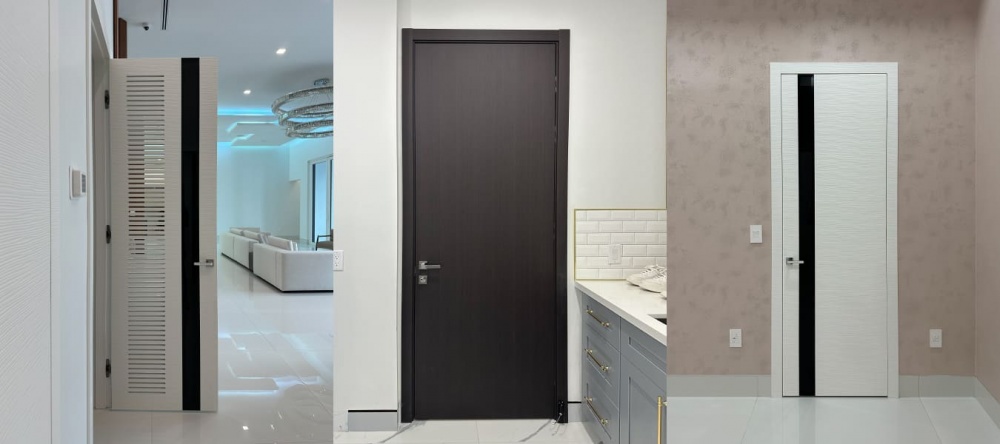
Maintenance Tips for Pre-hung and Slab Doors
Maintaining your pre-hung or slab doors is essential for ensuring their longevity and keeping them looking and functioning at their best. Here are some key maintenance tips for each type:
For Pre-hung Doors:
- Check Door Alignment:
- Regularly inspect the alignment of the door within its frame to ensure it opens and closes smoothly.
- Adjust the hinges if the door starts to sag or stick.
- Inspect Screws and Hinges:
- Periodically check the screws and hinges for any signs of wear or loosening.
- Tighten loose screws and replace any that are worn out to prevent the door from becoming misaligned.
- Examine Weatherstripping:
- If your pre-hung door includes weatherstripping, inspect it regularly for signs of wear or damage.
- Replace worn or damaged weatherstripping to maintain proper insulation and energy efficiency.
For Slab Doors:
- Check Hardware:
- Regularly inspect the hinges, lockset, and other hardware to ensure they are securely attached and functioning properly.
- Tighten loose screws and replace any worn-out hardware to keep the door operating smoothly.
- Touch Up the Finish:
- If your slab door is painted or stained, periodically touch up areas where the finish may have worn away.
- Applying fresh paint or stain helps protect the door from moisture and damage, extending its lifespan.
- Monitor for Warping:
- Because slab doors are often customized, keep an eye out for any signs of warping, especially in areas with high humidity.
- Address any warping issues early to prevent further damage to the door or frame.
Conclusion:
By following these maintenance tips, you can extend the life of your pre-hung or slab doors and keep them looking great for years to come. Regular inspections, timely repairs, and proper care are key to ensuring your doors continue to function smoothly and enhance the beauty of your home.
Common Mistakes to Avoid When Choosing Between Pre-hung and Slab Doors
Choosing between pre-hung and slab doors can be straightforward if you avoid some common mistakes that homeowners often make. Here are key points to keep in mind:
- Ignoring the Condition of the Existing Door Frame:
- Mistake: Many homeowners fail to assess the condition of their existing door frame before choosing a door type.
- Impact: If the frame is warped, damaged, or not level, installing a slab door can result in a poor fit and operational issues.
- Solution: Consider opting for a pre-hung door if your current frame is in bad shape, as it comes with its own frame, ensuring a proper fit.
- Underestimating the Complexity of Installing a Slab Door:
- Mistake: Some homeowners underestimate the skill and precision required to install a slab door.
- Impact: Slab doors offer customization but require accurate measurements, careful alignment, and the installation of hinges and hardware, which can be difficult for those with limited DIY experience.
- Solution: Be realistic about your skill level, and consider hiring a professional if you're not confident in your ability to install a slab door correctly.
- Overlooking the Total Cost of Installation:
- Mistake: A common oversight is focusing solely on the initial purchase price of the door without considering the total cost of installation.
- Impact: While slab doors may be cheaper upfront, the costs for hardware, tools, and potential professional installation can increase the overall expense.
- Solution: Calculate all associated costs, including materials and labor, to get a complete picture of what each option will cost you in the long run.
By being aware of these common mistakes, you can make a more informed decision between pre-hung and slab doors, ensuring that you select the option that best meets your needs, skills, and budget.
Why Choose Indigo Doors for Your Pre-hung and Slab Door Needs
When it comes to selecting the perfect doors for your home, Indigo Doors offers a wide range of high-quality pre-hung and slab doors that cater to every style and need. Whether you’re looking for the convenience of a pre-hung door or the customization options of a slab door, Indigo Doors has you covered.
Our selection includes doors made from premium materials, available in various styles, finishes, and sizes to match any home decor. With our commitment to quality and craftsmanship, you can trust that your doors will not only look stunning but also stand the test of time.
Indigo Doors also offers the convenience of nationwide delivery, ensuring that your doors arrive safely and promptly, no matter where you are in the United States. Our customer support team is here to assist you every step of the way, from selecting the right door to providing guidance on installation.
Choose Indigo Doors for all your pre-hung and slab door needs, and experience the perfect combination of quality, style, and service.

